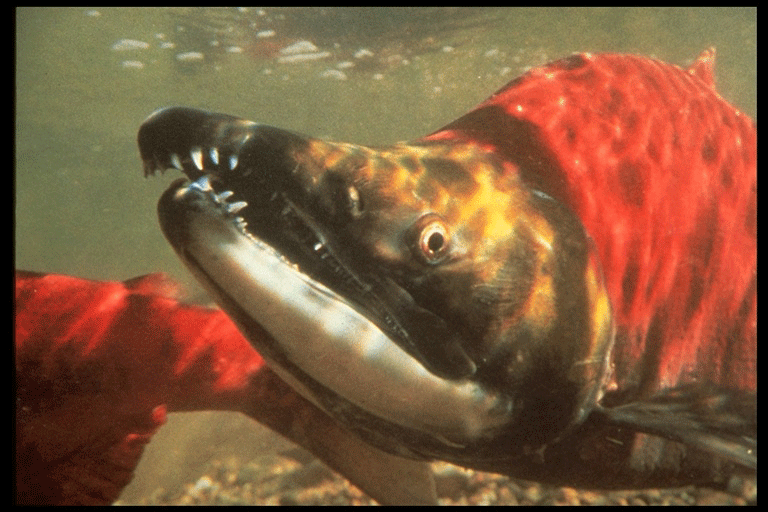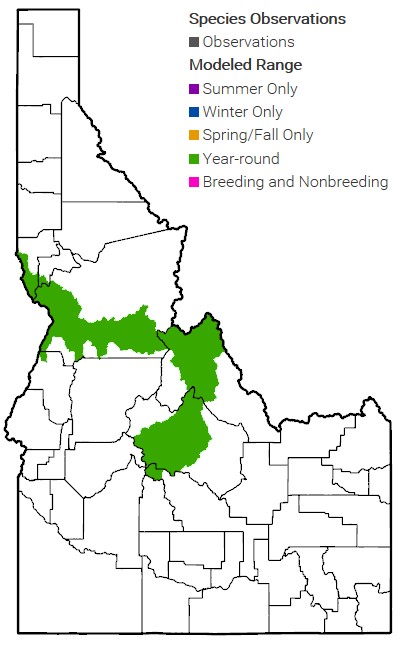ESA Status: Endangered – Designated Critical Habitat
The Snake River Evolutionarily Significant Unit (ESU) includes all naturally spawned anadromous and residual Sockeye Salmon (Oncorhynchus nerka) that originate from the Snake River basin as well as from several artificial propagation programs. Anadromous sockeye salmon spend one to two years in their nursey lake, migrate to spend several years at sea, and then return to their natal habitat to spawn. Residual sockeye salmon are genetically associated with the anadromous form but remain in freshwater to mature and reproduce.
The Snake River ESU was listed as Endangered by the National Marine Fisheries Service (NMFS) in 1991. In 1993, the NMFS designated Critical Habitat for the Snake River ESU of sockeye salmon in reaches of the Columbia, Snake, and Salmon Rivers as well as in Stanley, Redfish, Yellow Belly, Pettit, and Alturas Lakes and creeks. In 2015, the NMFS released a Recovery Plan for the Snake River ESU. The Recovery Plan evaluated the combined effects of both historical and present day threats to the Snake River ESU. While fisheries are better regulated now and some barriers have been removed, the overall decline in sockeye salmon abundance, combined with widespread habitat degradation and continual passage impairment, causes the Snake River ESU to remain vulnerable to drastic population decline and genetic diversity loss. Lastly, the 2022 Five-Year Status Review of the Snake River ESU determined that, while significant progress has been made through the captive broodstock based hatchery program, natural production levels of anadromous returns remain extremely low and the Endangered ESA listing status remains appropriate.
Staff Contact:
More Information:
Species Profile for Sockeye Salmon – U.S. Fish & Wildlife Service

Photo Credit: Jeremy Sarrow at California Academy of Sciences

Map Credit: Idaho Department of Fish and Game
 Official Government Website
Official Government Website